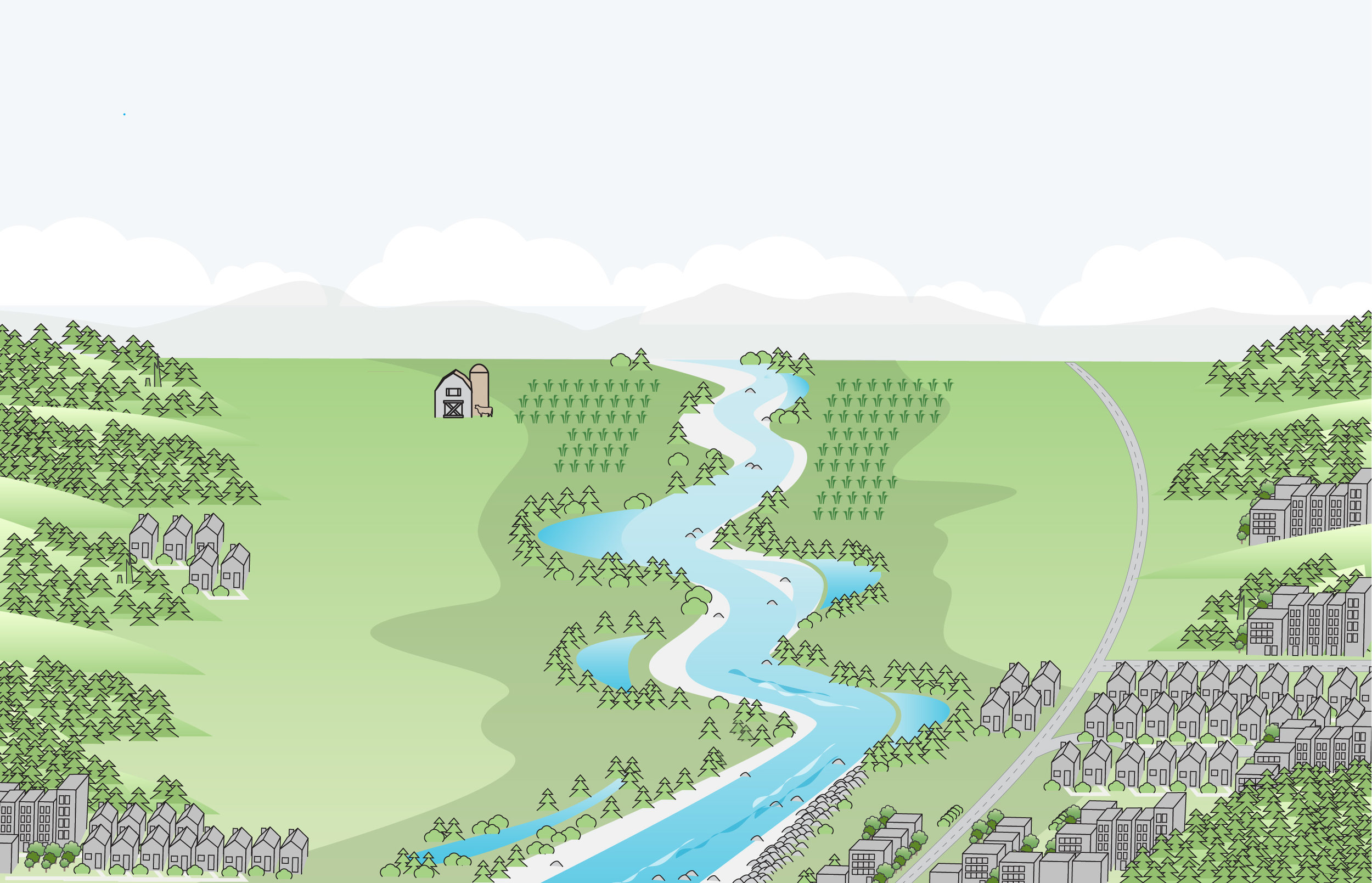By Emily Howe, aquatic ecologist
Green infrastructure is a widely encompassing term. In general, it is an approach to natural-resource management that protects, restores or mimics natural ecosystem processes. The idea is that vegetation, soils and other elements can be used cost-effectively to create healthier environments for people and nature.
The Two-Minute Takeaway
A quick explanation of scientific terms and concepts we use regularly in conservation
Conventionally, humans were very effective at routing water off the landscape as quickly as possible. This is done through “gray” infrastructure, including pipes, gutters and levee systems. These systems collect and concentrate water as it runs off the landscape, creating high velocity streams and rivers that pulse dramatically with each rainstorm. These high-pulse systems cause erosion and flooding in streams and rivers, damaging habitat, property and infrastructure.
The other problem with gray infrastructure is that it does not adequately clean pollutants before the water enters adjacent water bodies. In urban areas, rainwater cannot soak into the ground as it naturally should. Instead, it runs across roofs, parking lots, and streets, picking up pollutants along the way. By the time this water reaches a stormwater outflow pipe in a lake, river or Puget Sound, it has collected trash, bacteria, pathogens, heavy metals, oils, excess nutrients and other pollutants. These pollutants can harm people, fish and wildlife, as well as contaminate human food resources, such as shellfish.
In natural and more undeveloped areas, rainwater is absorbed and filtered by vegetation and soil. This slows water velocity in stream and river systems, as plants and soil deliver rainwater more gradually to rivers and streams than hard, impervious surfaces. Plants and soils also clean rainwater, breaking down pollutants and settling out heavy metals. Using a patchwork of natural areas across the landscape, cities and counties can restore some of the natural processes needed to provide habitat, flood protection, cleaner air and cleaner water.




























